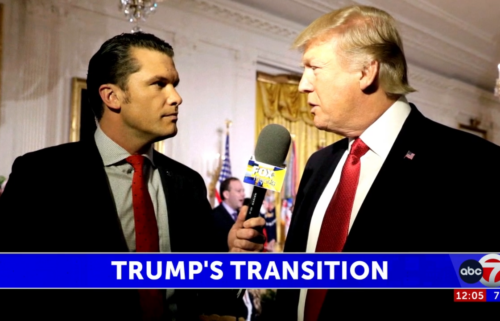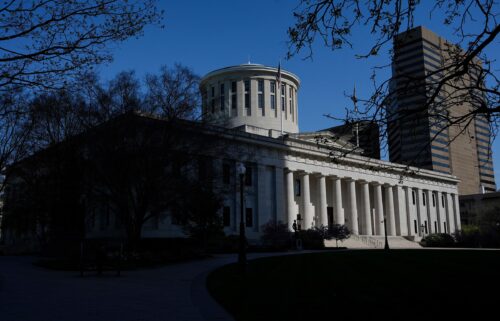The next 24 to 48 hours are crucial to avoid a potential government shutdown
Congress is once again running right up to the brink of a government shutdown. There is cautious optimism, but still work to be done. Progress has been made but the largest outstanding issues still stand. Everyone involved wants an agreement, but those same lawmakers and administration officials are still haggling over issues — large and small.
Bottom line:
Negotiators have about 24 to 48 hours to wrap up an agreement on all 12 spending bills to have any chance to move them in such a short time frame. This is very, very tight — and a short-term off-ramp will be needed if nothing comes together before Monday.
Underscoring that point:
The “four corners” — the top Democratic and Republican appropriators in the House and Senate — are expected to speak this weekend.
That’s an important sign — anything not agreed to at a lower subcommittee level needs to be hammered out by those four, and they’ve got a good history of doing just that. But it’s a heavy lift.
The clock:
Lawmakers have 14 days until the government runs out of money.
The calendar:
Time is the biggest enemy of any agreement. Beyond hammering out the very contentious policy issues, moving all 12 bills — no matter the vehicle — takes time. That is not something that is in abundance. There are two weeks and a laundry list of huge items outside of spending bills to deal with. This is akin to a legislative traffic jam staring everyone in the face. Right now it’s not out of the realm of possibility Democrats could attempt to move a government funding package, the United States-Mexico-Canada agreement approval, their prescription drug bill and the National Defense Authorization Act, and impeachment on that final week before Christmas. That’s a lot.
Remember this:
Once the House votes to impeach the President, it will essentially shut the Senate down until the trial is complete.
In other words, that vote likely needs to come after any spending vote for the Senate to have a chance to vote to keep the government open. That complicates things. Again, this is a traffic jam right now.
The outstanding issues:
There are a number of issues that need to be ironed out, and more have popped up in the last week as the individual subcommittees have worked (for the most part quite successfully, aides say) in closing out their respective bills. The biggest, however, remains the same: President Donald Trump’s border wall request and the transfer authority power that has allowed the administration to shift funds allocated for other things over to finance portions of the wall.
So will there be a shutdown:
Nobody is talking about a shutdown — including administration officials I’m talking to. If there isn’t a deal on all 12 bills, there will be a continuing resolution into 2020.
The real shutdown threat is that given the tight timeline and sheer mass of things on the 2019 to-do list, lawmakers somehow bumble into one. That’s not out of the realm of possibility, but not likely at this point, lawmakers and aides say.
Pelosi’s point:
House Speaker Nancy Pelosi, to CNN’s Jake Tapper Thursday night, on this very issue:
“I don’t think we’re headed for a shutdown. I don’t think anybody wants that.”
She noted that if a global agreement on funding isn’t reached, there would be a continuing resolution into 2020.
Some 30,000-foot perspective from the Hill:
It’s difficult to overstate just how poisonous lawmakers from both parties, in both chambers, view the idea of another shutdown. The partial government shutdown that ended in January, the longest in US history, burned everyone. Not in the political sense — that blame landed squarely on the White House and Republicans — but in the sense of embarrassment about what had occurred from a governing perspective under their watch. Nobody wants that again.
Why not just punt now:
There’s a reason Pelosi and Senate Majority Leader Mitch McConnell committed to trying to get all the spending bills done by the end of the year: it’s likely the only way to secure the significant funding boosts for defense and domestic spending secured in this year’s budget agreement.
“If we CR into next year talks are over,” one source involved in the process said. “The administration is perfectly fine not having the increased spending anyway.”
That’s why lawmakers are pressing so hard in such a tight timeline to get the entire thing done now. There are tens of billions of dollars at stake.
The options:
-Reach agreement on all 12 spending bills, and figure out the mechanism to move them.
-Pass a continuing resolution, likely into February or March.
-Pair full year bills where there is agreement with a CR for any outstanding measures (i.e. the always contentious Department of Homeland Security bill)
Of note:
That third option is a natural landing spot — something lawmakers have done repeatedly in the past and would allow them to take advantage of the hard fought budget agreement funding increases for key defense and domestic spending priorities. However, it is unlikely to happen this time around. The White House has made clear to lawmakers, sources say, that splitting the Department of Homeland Security bill off from the rest of the full year bills is not something it would support. In other words, leaving DHS out in the cold is likely the biggest potential shutdown threat. This significantly limits the options of congressional negotiators.
How does the wall get resolved:
The White House has been clear that there can be no restrictions on transfer authority, sources involved say. But they’ve indicated they will come down significantly from the $8.6 billion wall funding request (most of which would come in the DHS bill.) Democrats, still outraged at how the White House has shifted money to finance the wall, have been reluctant to agree to a single dollar for the border wall and haven’t given an inch on the transfer authority issue. There’s conceivably a sweet spot there, but they haven’t settled on it yet, people involved say.




